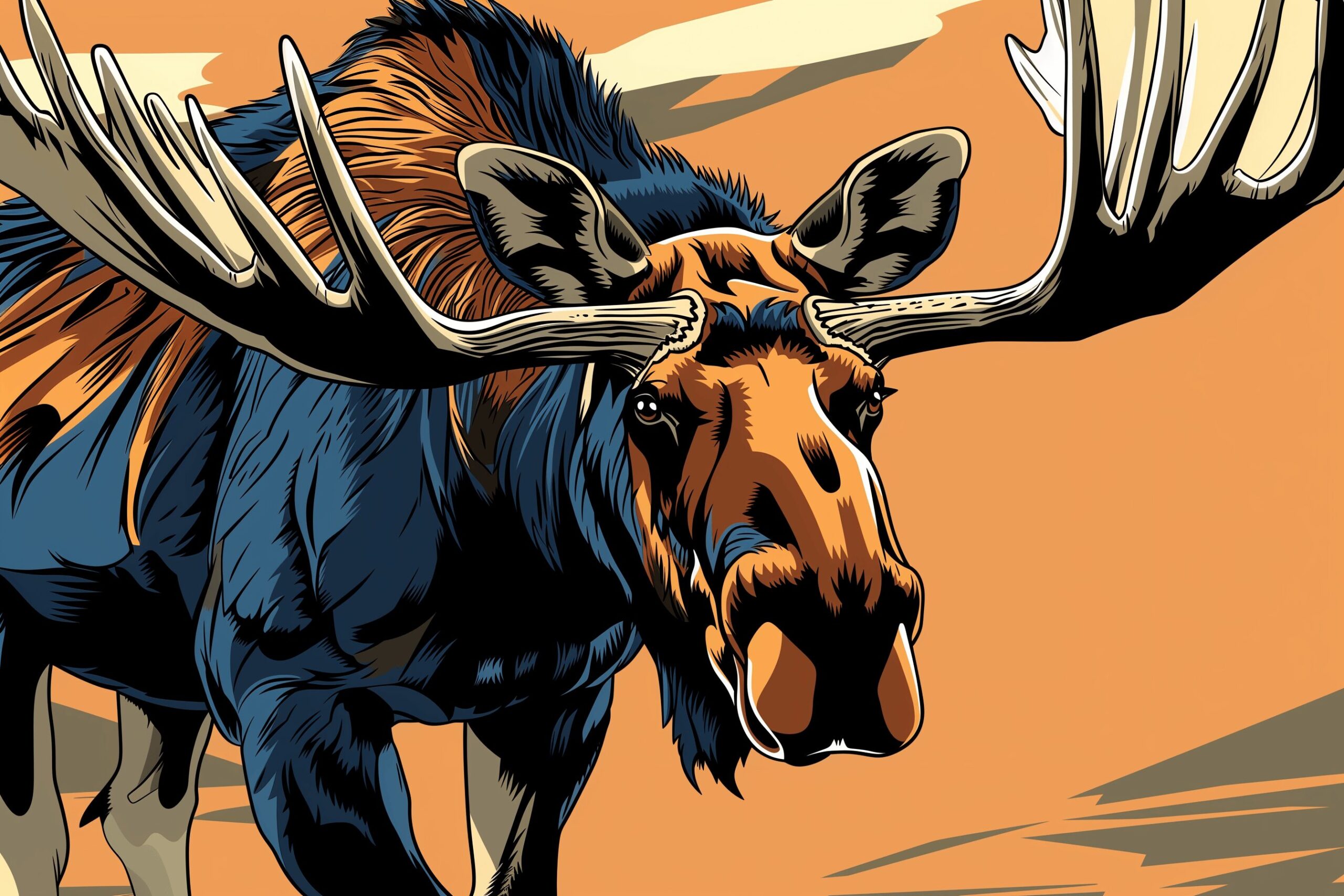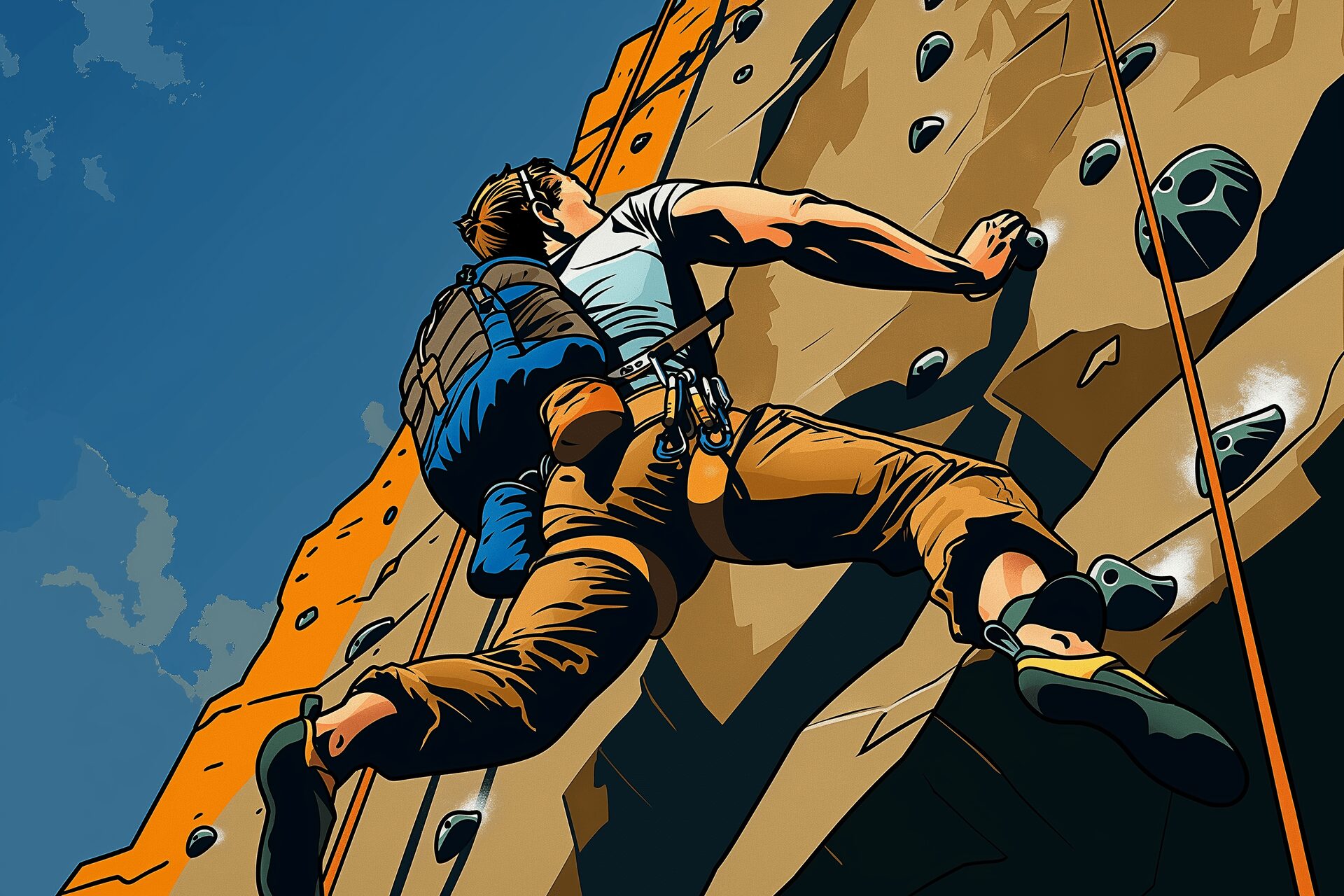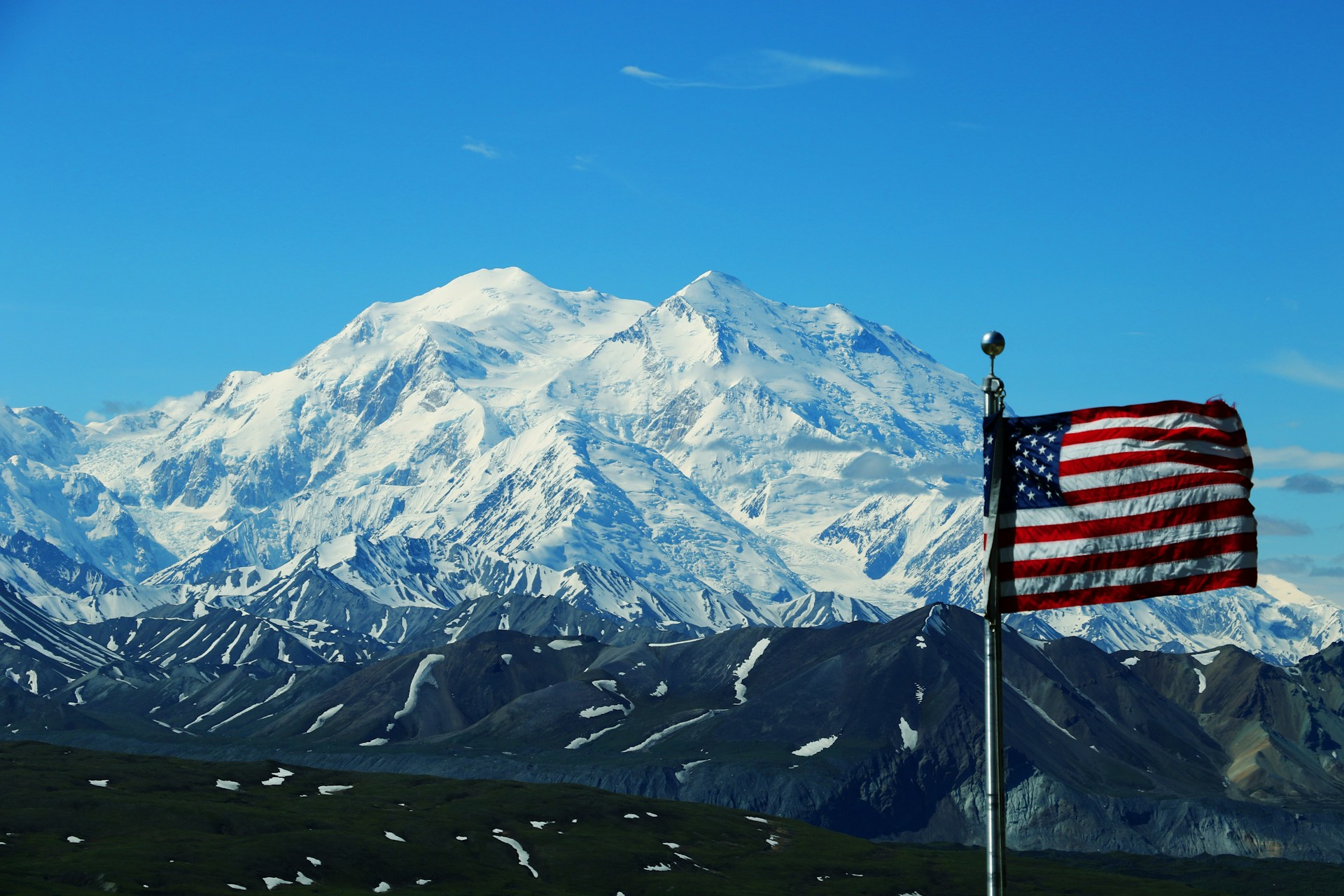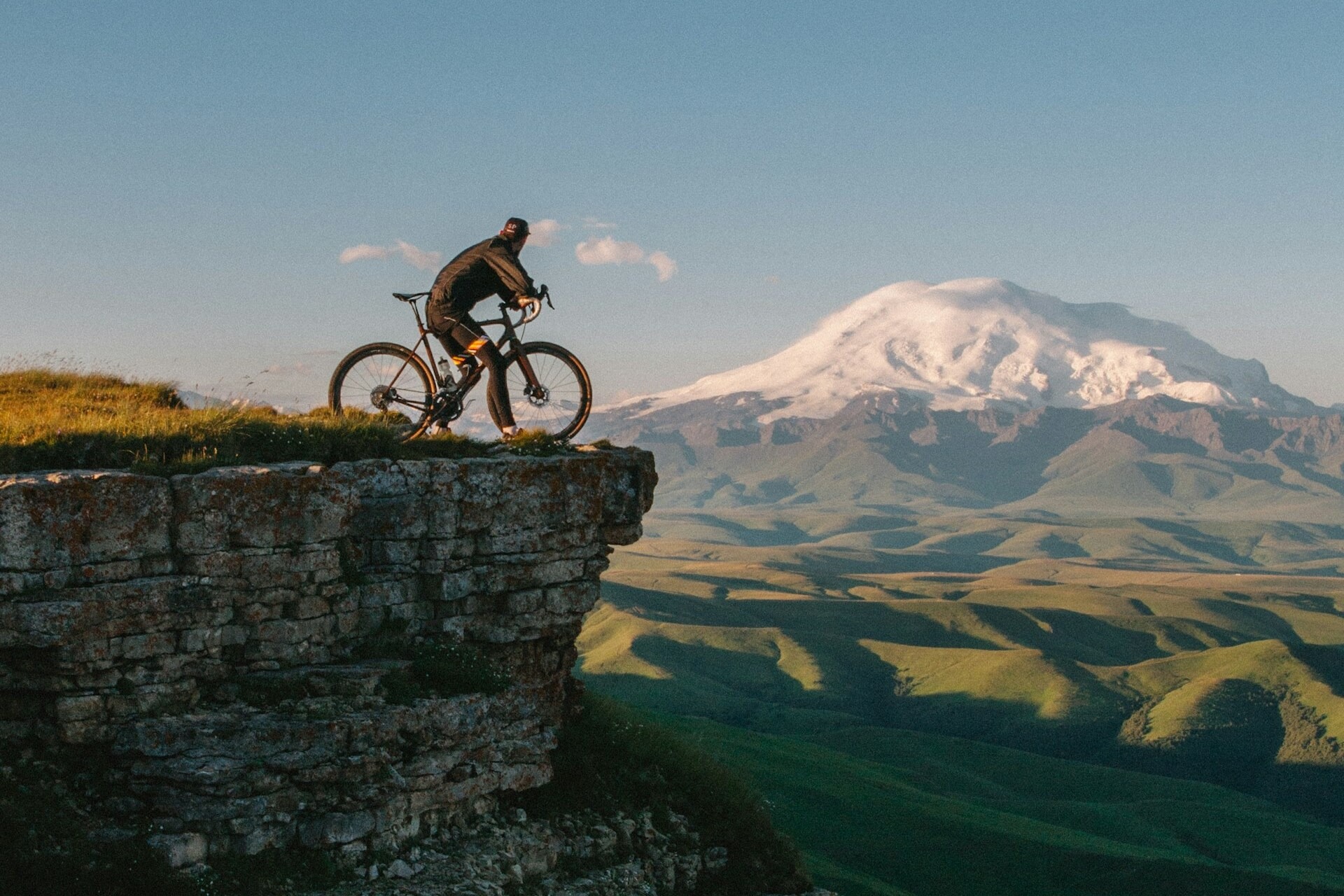
As an Amazon Associate, Modded gets commissions for purchases made through links in this post.
Are you thinking about going hiking this year? Going on the trail is a fun activity thousands of hikers annually participate in. Before you embark, you’ll need to consider a few things, such as your hiking outfit.
American hiking trails span thousands of miles and vary in climate. It’s essential to consider how you’ll dress for the trek ahead. Here’s a guide on creating a hiking outfit from head to toe.
How Can You Make a Hiking Outfit?
Your hiking outfit contains more than just your shirt and shorts. You’ll need hats, boots, gaiters and more. You’d hate to be stuck cold in Denali, where the temperature barely eclipses 50 degrees Fahrenheit in the summer. Equip these nine pieces before heading out on a long trail.
1. Boots
First, let’s start with your shoes. The terrain can be rough, so you’ll need rugged shoes to support your feet. You don’t want to walk barefoot over sharp rocks and edges. Tennis shoes may be enough for you if you have a favorite pair. Though, you could get a couple of boots. These heavy-duty supporters endure the uneven terrain like a set of off-road tires.
The boots you get depend on the terrain you’re walking. For muddy and snowy trails, get waterproof boots that won’t degrade due to precipitation. Rocky trails go best with thick boots to protect your feet from the sharp rocks. Do you plan to run? Choose lightweight boots that offer stability and reduce the risk of injuries.
2. Socks
“Socks, cushioned sole, OD green. Try and keep your feet dry.” Lieutenant Dan gives this advice to Forrest Gump when they’re in Vietnam. Socks are more important than you think to your hiking outfit. One wrong step in a puddle, and your feet could be wet all day. You need quality socks to keep your feet dry and peace of mind. Nobody likes a wet sock.
Find socks that are moisture-wicking. These socks reduce the odds of blisters and increase your comfort. You’ll also need socks that absorb shocks. You’re on your feet all day, so shock absorption lowers the burden on your lower body.
The hiking socks should also be breathable, especially in the summertime. Imagine walking with thick socks in Death Valley National Park, where temperatures regularly exceed 100 degrees in the summer. Your feet will practically be on fire.
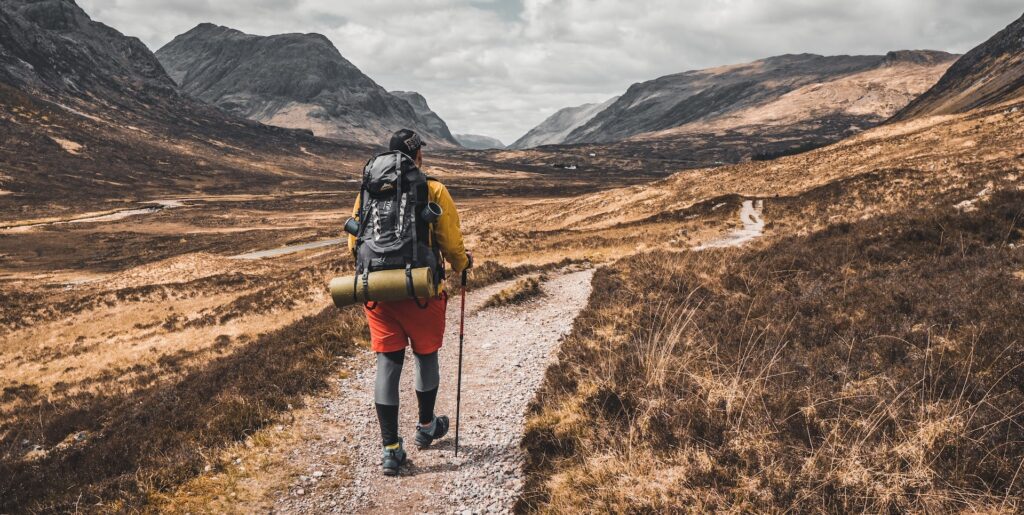
3. Sandals
Do you get hot quickly? You don’t have to be in Death Valley to feel hot while on the trail. Hiking boots and tennis shoes can increase your body temperature and make you feel sluggish. Some choose to wear sandals with their hiking outfit. This footwear may seem unconventional, but it can be handy for particular environments.
For example, say your hiking trail takes you to a river or beach. You don’t want to take your hiking boots in the water, so you break out the sandals to make it easier on yourself. Now you can have fun in the water with your friends.
Hiking sandals are more convenient than anything. Imagine you get a rock or pebble stuck in your shoe. It’s way easier to remove it from your sandal than your boots. Also, consider the blisters. They’re less likely to stem from your sandals than the boots. Bring a pair of both, just in case.
4. Shirt
Do you have a go-to hiking shirt in your closet? Many opt for a light T-shirt or another breathable garment. Think about how many hours you’ll spend on the trail. The last thing you want is an uncomfortable shirt. Warm days call for short-sleeve tees, whereas colder climates may require a long-sleeve plaid shirt. These thicker shirts are optimal for staying warm yet comfortable when the temperatures drop.
The climate is a significant factor in your shirt decision, but there are a few other things to consider. For example, wear a collared shirt if the UV rays are intense. The collar protects your neck — a vulnerable place for sunburn. Having a shirt with pockets to carry a knife and other tools you need on the trail is also beneficial.
5. Shorts
Now, let’s talk about the lower half of your body. Do you prefer wearing shorts or pants with your hiking outfit? Shorts are beneficial when it’s hot and muggy outside. You need every opportunity to stay cool, so having a pair with you on the trail is wise. Shorts also give you a wide range of motion when you need to be flexible.
When picking shorts, you want garments that combine breathability and durability. You’ll probably start sweating in your shorts, so pick moisture-wicking shorts to prevent chafing and unpleasant smells during the hike.
6. Pants
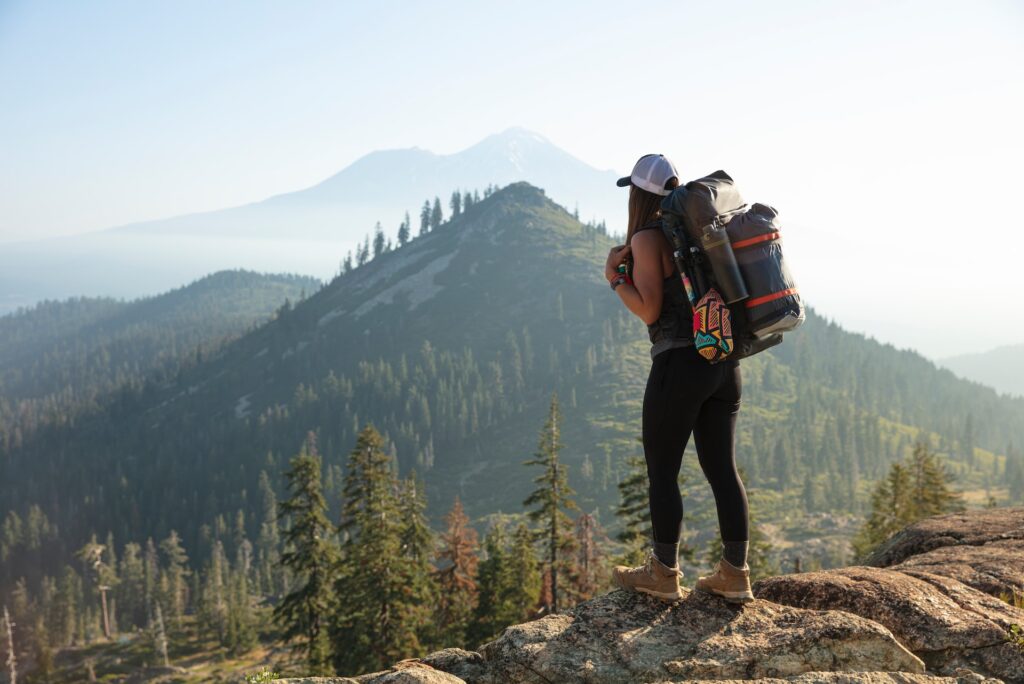
I prefer wearing shorts because of the temperature, but wearing pants in your hiking outfit is advantageous. The biggest pro with pants is protection. The longer length protects your legs from two pesky culprits: bugs and sunburn. As much as I love shorts, I admit I swat my leg more often than I care to admit because of mosquitos and various insects. The pants are also nice for protecting from UV rays.
When looking for pants, account for the material. Most hiking pants have materials like nylon and polyester because they keep you dry and cool. If you want comfort, seek out spandex or elastane pants. Like shorts, pants with mobility are essential for increasing your range of motion.
7. Backpack
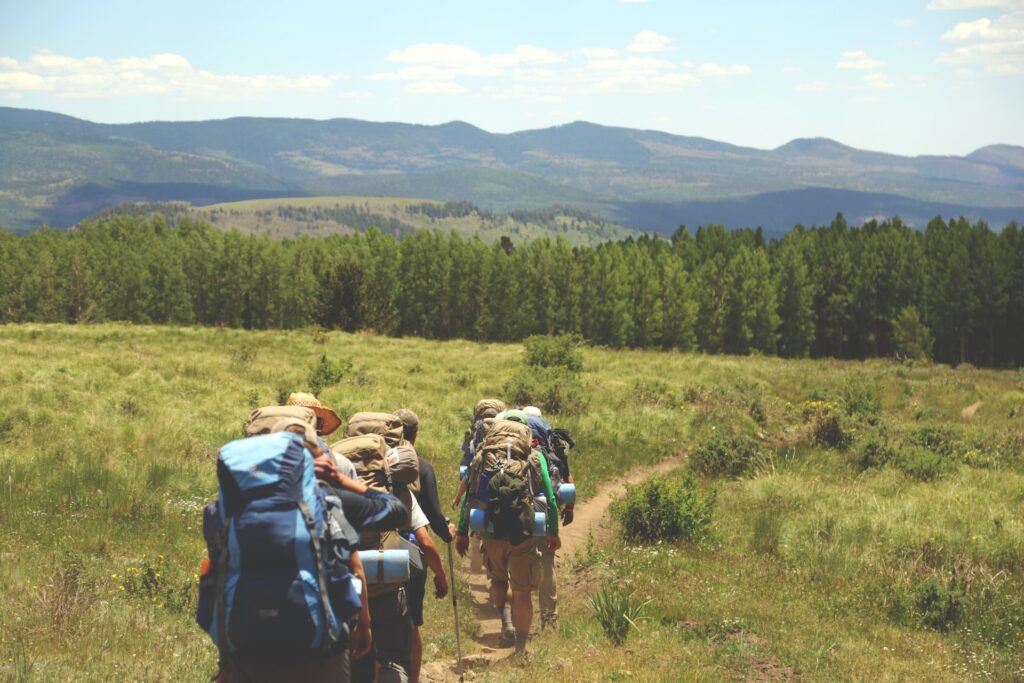
Hiking is a simple adventure. All you need are your two feet and determination to get on the trail. Though, it helps to have a nice backpack with you. A hiking knapsack is advantageous if you’re on long trails. Imagine walking the Pacific Crest Trail spanning over 2,600 miles from California to Washington. Yeah, you’ll need some help.
There are a few different types of hiking backpacks depending on your trek. Short trails only need a day backpack. These packs weigh roughly a pound and carry everything you need for a day trip. Then there are long-distance hiking backpacks. These knapsacks are large because you’ll need them for multiple days. Some large bags carry 80 liters or more of gear.
8. Jacket
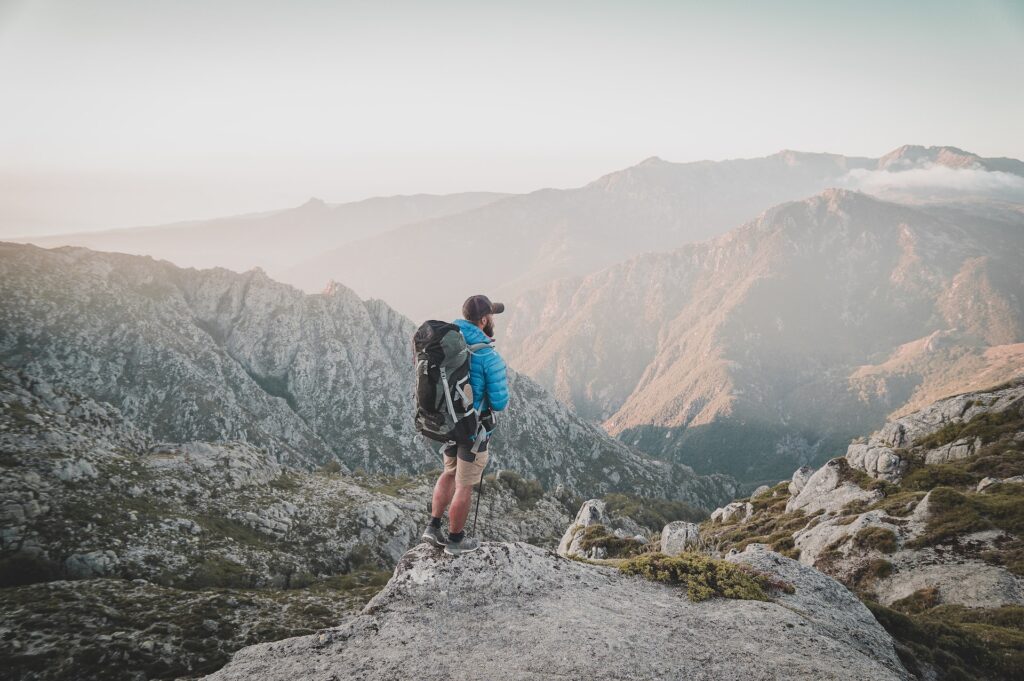
It’s no secret that hiking trails can get cold. Hiking is favored when the spring and summer arrive, but you can still take fall and winter excursions. The low temperatures call for a good hiking jacket. Who knows? Some climates are hot during the day but chilly at night, so you’ll never know when you’ll need one.
There are a few types of hiking jackets to remember, such as:
- Softshell: Softshells are the lightest jackets on the market and are great for cool but not cold days.
- Hardshell: Your hardshell jackets are more substantial than softshell and are made for precipitation.
- Fleece: When chilly days come, fleece jackets keep you warm and comfortable. Though, don’t rely on them when in the Arctic Circle.
- Insulated: These jackets are the big boys. They make you look like a pufferfish when on the trail. Despite the looks, they keep you the warmest. We promise you that insulated jackets are handy when at Wrangell-St. Elias or Denali National Park.
9. Hat
When you imagine UV rays, you likely consider shielding your arms, face and neck from the sun. However, do you think about your head? Your hair protects your scalp from the worst burns. Still, you should wear a hat when hiking. Even cold climates need a hat. Hiking up mountains puts you closer to the sun and risks sunburn.
You can bring your favorite baseball cap along for the ride. Who wouldn’t want to represent Red Sox nation in the other 49 states? Besides your ball caps, find a wide-brimmed cap like a cowboy hat. These caps provide maximum protection while out in the sun.
What Should You Avoid With a Hiking Outfit?
We’ve discussed things you should wear in your hiking outfit. However, you should avoid these five items.
1. Nice Clothes
Sundays are pleasant days to hike, but avoid wearing your church clothes. Hikes aren’t necessarily the place for formal wear. You can make an exception for a wedding, but hikes need comfortable clothing.
2. Tight Clothes
On that note, don’t wear tight clothing. Hikes often last hours, if not days. You need loose-fitting clothes to ensure your comfort. Wear clothes on the baggier side.
3. Low Socks
Many guys wear no-show or low-cut socks, but you should bring high socks on the trail. Low socks don’t pair well with hiking boots because they cause friction. It won’t take long for blisters and bruises to form.
4. Cotton
Breathable fabrics are paramount. That means try to avoid cotton. It may feel comfortable, but cotton is one of the worst fabrics to wear if you sweat a lot. Suddenly, your clothes will feel much heavier.
5. Cologne
We get it. You want to smell nice for the ladies. However, wearing cologne or any unique fragrance is not a good idea. Bugs can smell you from a mile away (partly an exaggeration). So wear your basic deodorant and stick to it.
Picking a Great Hiking Outfit
Hiking is a terrific pastime for solo travelers and social butterflies. Get outside and embrace American beauty! Before you do, use this guide to pick the best hiking outfit.
Stay up to date with the latest by subscribing to Modded Minute.
Author
Jack Shaw is a senior writer at Modded. Jack is an avid enthusiast for keeping up with personal health and enjoying nature. He has over five years of experience writing in the men's lifestyle niche, and has written extensively on topics of fitness, exploring the outdoors and men's interests. His writings have been featured in SportsEd TV, Love Inc., and Offroad Xtreme among many more publications.

